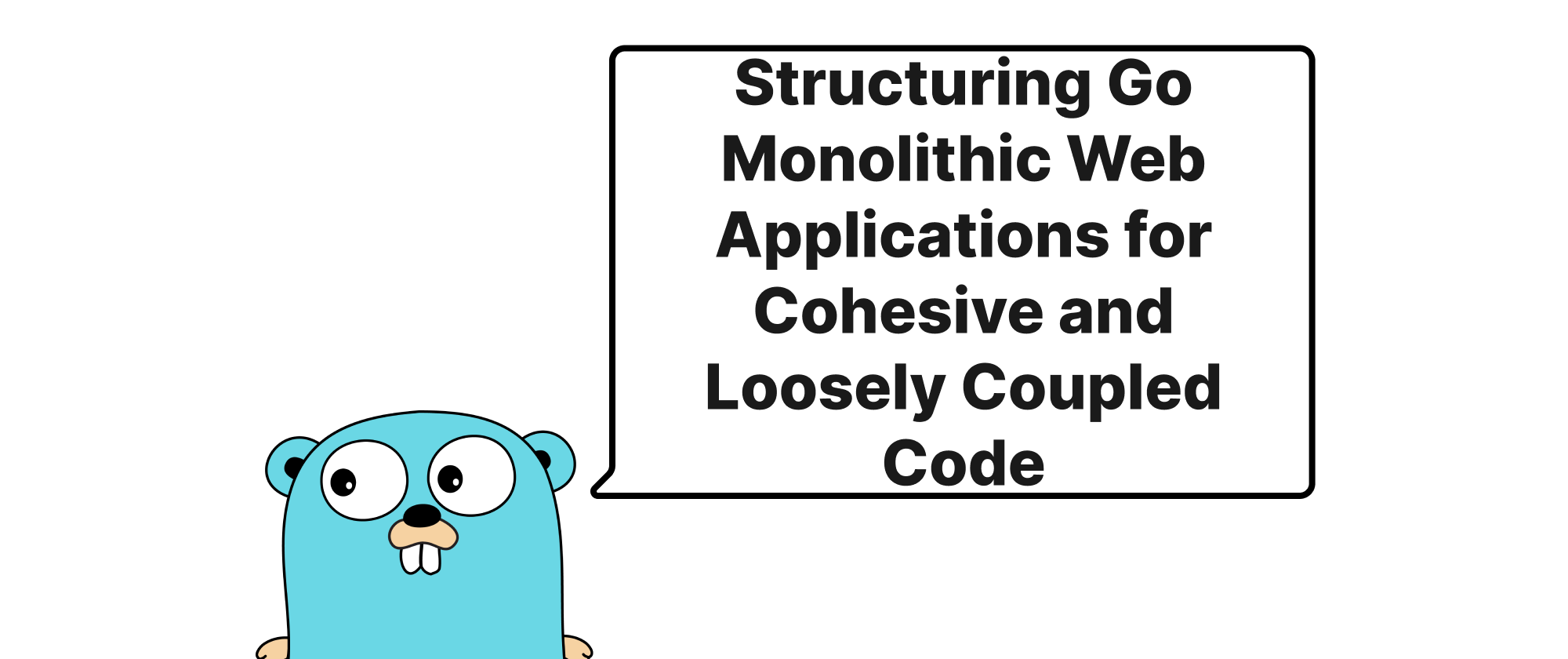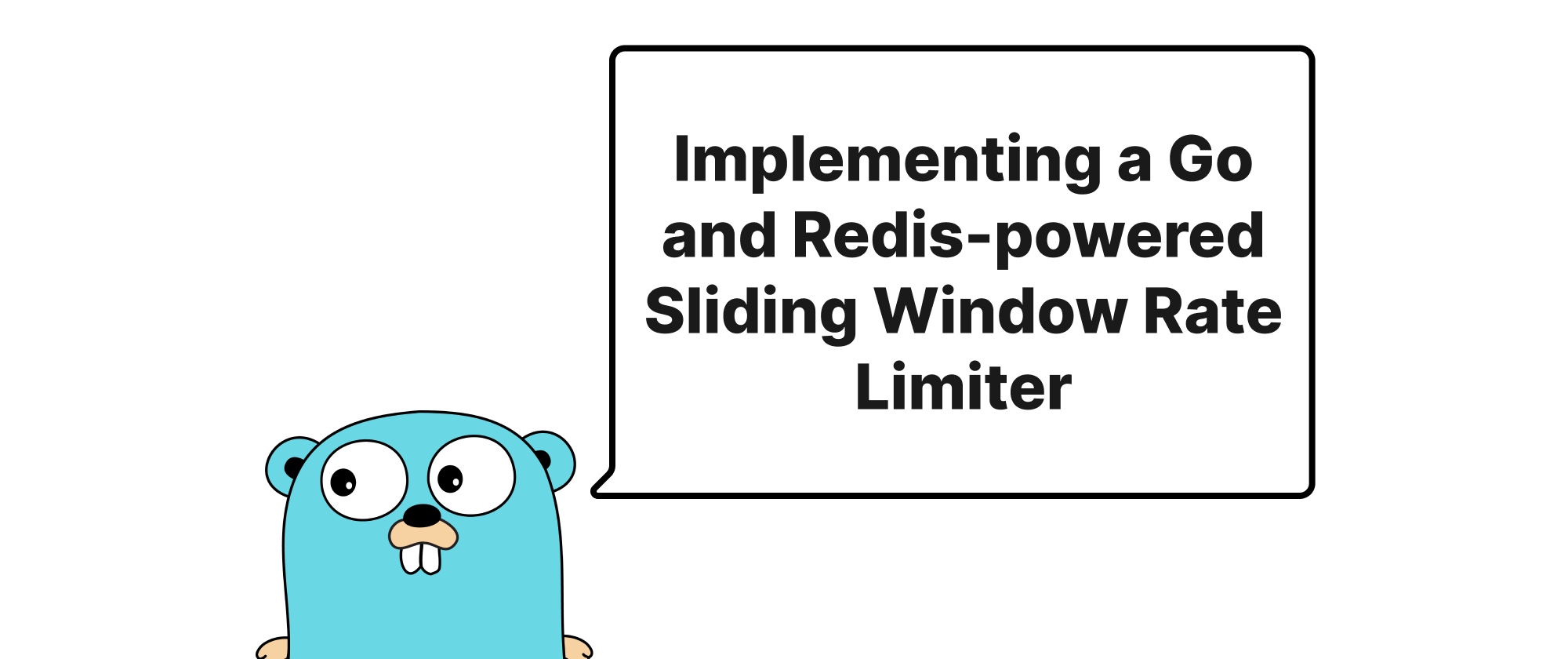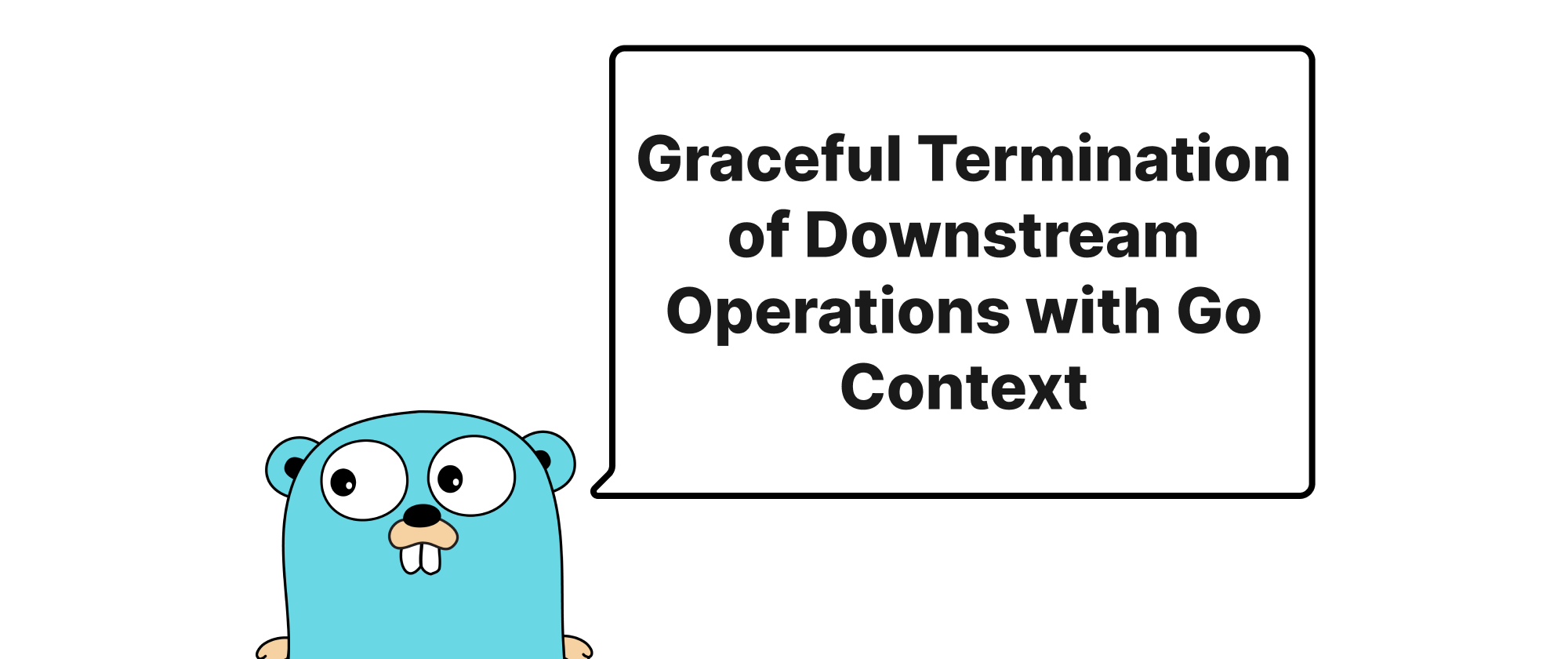Structuring Go Monolithic Web Applications for Cohesive and Loosely Coupled Code
Takashi Yamamoto
Infrastructure Engineer · Leapcell

Introduction
In the vibrant world of web development, Go has carved out a significant niche, celebrated for its performance, concurrency story, and straightforward syntax. As applications evolve from simple scripts to complex systems, maintaining a clean, understandable, and scalable codebase becomes paramount. This is especially true for monolithic applications, where all components reside within a single codebase. While microservices offer a popular alternative, monoliths remain a practical and often preferred choice for many projects, particularly in their early stages or for teams prioritizing simpler deployments and unified development. However, without careful architectural consideration, such monoliths can quickly devolve into tangled messes, making new feature development a nightmare and bug fixing a perilous endeavor. The core challenge lies in organizing code to ensure high cohesion—where related parts are kept together—and low coupling—where components are independent and interchangeable. This piece will explore effective strategies and patterns for structuring Go monolithic web applications to achieve these crucial properties, transforming potential chaos into maintainable order.
Understanding the Core Principles
Before diving into specific Go implementations, let's briefly define the central concepts that guide our discussion:
- Cohesion: This refers to the degree to which the elements of a module belong together. High cohesion implies that all parts of a module work toward a single, well-defined purpose. For example, a
UserServicemodule should only contain logic directly related to user management, not order processing or payment handling. High cohesion leads to modules that are easier to understand, test, and maintain. - Coupling: This refers to the degree of interdependence between software modules. Low coupling means that modules are relatively independent of each other, making changes in one module less likely to necessitate changes in others. For instance, a
UserServiceshould ideally not depend directly on the concrete implementation of a database client but rather on an interface it defines. Low coupling fosters flexibility, reusability, and easier debugging.
Achieving high cohesion and low coupling is a cornerstone of good software design, leading to more robust, scalable, and maintainable applications.
Strategic Code Organization in Go Monoliths
Go's package system and interface-driven design provide excellent tools for enforcing these principles. Here, we'll outline a common and effective architectural pattern for Go monolithic web applications, often referred to as a "layered architecture" or "clean architecture" variant.
1. Project Structure - A Layered Approach
A well-defined directory structure is the first step towards clarity. A typical Go monolithic web application might look like this:
my-web-app/
├── cmd/
│ └── server/
│ └── main.go
├── internal/
│ ├── app/
│ │ ├── user/
│ │ │ ├── service.go
│ │ │ └── repository.go
│ │ ├── product/
│ │ │ ├── service.go
│ │ │ └── repository.go
│ │ └── common/
│ │ └── errors.go
│ ├── domain/
│ │ ├── user.go
│ │ └── product.go
│ ├── port/
│ │ ├── http/
│ │ │ ├── handler.go
│ │ │ ├── routes.go
│ │ │ └── dto.go
│ │ └── cli/
│ │ └── commands.go
│ ├── adapter/
│ │ ├── database/
│ │ │ ├── postgres/
│ │ │ │ └── user_repo.go
│ │ │ │ └── product_repo.go
│ │ │ └── redis/
│ │ │ └── cache.go
│ │ └── external/
│ │ └── payment_gateway/
│ │ └── client.go
│ └── config/
│ └── config.go
├── pkg/
│ └── utils/
│ └── validator.go
├── web/
│ └── static/
│ └── templates/
└── go.mod
└── go.sum
Let's break down these directories:
cmd/: Contains the main entry points for executable commands. For a web server,cmd/server/main.gowould typically initialize and start the HTTP server. This keeps the application's bootstrapping logic separate and minimal.internal/: This directory holds application-specific code that should not be imported by other projects. This is crucial for maintaining a strong internal boundary.internal/app/: Contains the core business logic, often structured by feature (e.g.,user,product).service.go: Implements the business rules and orchestrates interactions with repositories and external services. This is where most of the "what" and "why" of your application lives.repository.go: Defines interfaces for data operations. These interfaces are implemented by concrete adapters.
internal/domain/: Defines core application entities, value objects, and domain-specific types. These should be pure Go structs without any business logic tied to specific persistence or transport mechanisms.internal/port/: Defines the "ports" or interfaces through which the application interacts with the outside world.http/: Contains HTTP handlers, routing setup, and DTOs (Data Transfer Objects) for requests and responses. This layer defines how the application receives input and sends output via HTTP.cli/: If your application has CLI commands, their definitions would go here.
internal/adapter/: Contains "adapters" that implement the interfaces defined ininternal/appandinternal/port. These are concrete implementations for interacting with databases, external APIs, message queues, etc. They "adapt" external technologies to the application's domain.internal/config/: Handles application configuration loading and parsing.
pkg/: Stores reusable libraries or utilities that can be safely imported by other projects (though for a true monolith, this might be less common thaninternal). Examples include generic utility functions, custom error types, or helpers.web/: For static assets or HTML templates if your Go application serves them directly.
2. Achieving High Cohesion with Feature-based Service Structure
Within internal/app, organizing by feature (e.g., user, product) significantly improves cohesion. Each feature package contains everything related to that specific domain: its business logic (service), and its data access interfaces (repository).
Example: internal/app/user/service.go
package user import ( "context" "my-web-app/internal/domain" "my-web-app/internal/app/common" ) // Service defines the business logic for user management. type Service struct { repo Repository } // NewService creates a new user service. func NewService(repo Repository) *Service { return &Service{repo: repo} } // RegisterUser handles the registration of a new user. func (s *Service) RegisterUser(ctx context.Context, email, password string) (*domain.User, error) { // Business rule: check if user already exists existingUser, err := s.repo.GetUserByEmail(ctx, email) if err != nil && err != common.ErrNotFound { return nil, err } if existingUser != nil { return nil, common.ErrUserAlreadyExists } // Hash password (simplified for example) hashedPassword := "hashed_" + password user := &domain.User{ Email: email, Password: hashedPassword, // ... other fields } if err := s.repo.CreateUser(ctx, user); err != nil { return nil, err } return user, nil } // GetUserByID retrieves a user by their ID. func (s *Service) GetUserByID(ctx context.Context, id string) (*domain.User, error) { return s.repo.GetUserByID(ctx, id) }
Example: internal/app/user/repository.go
package user import ( "context" "my-web-app/internal/domain" ) // Repository defines the interface for user data storage operations. type Repository interface { CreateUser(ctx context.Context, user *domain.User) error GetUserByID(ctx context.Context, id string) (*domain.User, error) GetUserByEmail(ctx context.Context, email string) (*domain.User, error) UpdateUser(ctx context.Context, user *domain.User) error DeleteUser(ctx context.Context, id string) error }
Here, the user service encapsulates all user-related business rules. It uses the Repository interface, which is defined within the same user package, thereby increasing cohesion.
3. Achieving Low Coupling with Interfaces and Dependency Inversion
The key to low coupling in Go is the extensive use of interfaces. Services don't depend on concrete implementations of databases or external services; they depend on interfaces. Concrete implementations are then "injected" at a higher level (e.g., in main.go). This is a direct application of the Dependency Inversion Principle.
Example: internal/adapter/database/postgres/user_repo.go
package postgres import ( "context" "database/sql" "fmt" "my-web-app/internal/app/user" // Import the interface! "my-web-app/internal/domain" ) // UserRepository implements user.Repository for PostgreSQL. type UserRepository struct { db *sql.DB } // NewUserRepository creates a new PostgreSQL user repository. func NewUserRepository(db *sql.DB) *UserRepository { return &UserRepository{db: db} } // CreateUser implements user.Repository.CreateUser. func (r *UserRepository) CreateUser(ctx context.Context, u *domain.User) error { query := `INSERT INTO users (email, password) VALUES ($1, $2) RETURNING id` err := r.db.QueryRowContext(ctx, query, u.Email, u.Password).Scan(&u.ID) if err != nil { return fmt.Errorf("failed to create user: %w", err) } return nil } // GetUserByEmail implements user.Repository.GetUserByEmail. func (r *UserRepository) GetUserByEmail(ctx context.Context, email string) (*domain.User, error) { u := &domain.User{} query := `SELECT id, email, password FROM users WHERE email = $1` err := r.db.QueryRowContext(ctx, query, email).Scan(&u.ID, &u.Email, &u.Password) if err != nil { if err == sql.ErrNoRows { return nil, user.ErrNotFound // Using a specific error from the app/user layer } return nil, fmt.Errorf("failed to get user by email: %w", err) } return u, nil } // ... other repository methods
Notice UserRepository explicitly implements user.Repository. The user.Service knows nothing about PostgreSQL; it only interacts with the user.Repository interface. If we decide to switch to a NoSQL database or an in-memory repository for testing, only internal/adapter/database needs to change, not the core business logic in internal/app/user. This dramatically reduces coupling.
4. Wire Up in cmd/server/main.go
The top-level main.go is responsible for assembling all the components and injecting dependencies.
Example: cmd/server/main.go
package main import ( "context" "database/sql" "log" "net/http" "os" "os/signal" "syscall" "time" _ "github.com/lib/pq" // PostgreSQL driver "my-web-app/internal/adapter/database/postgres" "my-web-app/internal/app/user" "my-web-app/internal/config" "my-web-app/internal/port/http" ) func main() { cfg := config.LoadConfig() // Load configuration // Initialize database connection db, err := sql.Open("postgres", cfg.DatabaseURL) if err != nil { log.Fatalf("Failed to connect to database: %v", err) } defer db.Close() if err = db.Ping(); err != nil { log.Fatalf("Failed to ping database: %v", err) } log.Println("Database connection established.") // --- Dependency Injection --- // Create concrete repository implementations userRepo := postgres.NewUserRepository(db) // Create service layer with injected repositories userService := user.NewService(userRepo) // Inject userRepo (implementation of user.Repository) // Create HTTP handler with injected services userHandler := httpport.NewUserHandler(userService) // --- End Dependency Injection --- // Setup routes router := httpport.NewRouter(userHandler) // Pass userHandler to the router server := &http.Server{ Addr: cfg.ListenAddr, Handler: router, ReadTimeout: 5 * time.Second, WriteTimeout: 10 * time.Second, IdleTimeout: 15 * time.Second, } // Start server in a goroutine go func() { log.Printf("Server listening on %s", cfg.ListenAddr) if err := server.ListenAndServe(); err != nil && err != http.ErrServerClosed { log.Fatalf("Could not listen on %s: %v", cfg.ListenAddr, err) } }() // Graceful shutdown quit := make(chan os.Signal, 1) signal.Notify(quit, os.Interrupt, syscall.SIGTERM) <-quit log.Println("Shutting down server...") ctx, cancel := context.WithTimeout(context.Background(), 30*time.Second) defer cancel() if err := server.Shutdown(ctx); err != nil { log.Fatalf("Server forced to shutdown: %v", err) } log.Println("Server exited gracefully.") }
main.go is where all the pieces come together. It's the "composition root" of our application, responsible for creating concrete types and injecting them into the layers that depend on their interfaces.
Conclusion
Structuring a Go monolithic web application with high cohesion and low coupling is not just an academic exercise; it's a practical necessity for building maintainable, scalable, and testable software. By adopting a layered architecture, leveraging Go's interface system for dependency inversion, and organizing code by feature, developers can create robust applications that are a joy to work with. This approach minimizes the ripple effect of changes, simplifies debugging, and enables independent development of different parts of the application, ultimately leading to a more resilient and extensible system. Embrace interfaces, organize by intent, and your Go monolith will thrive.


